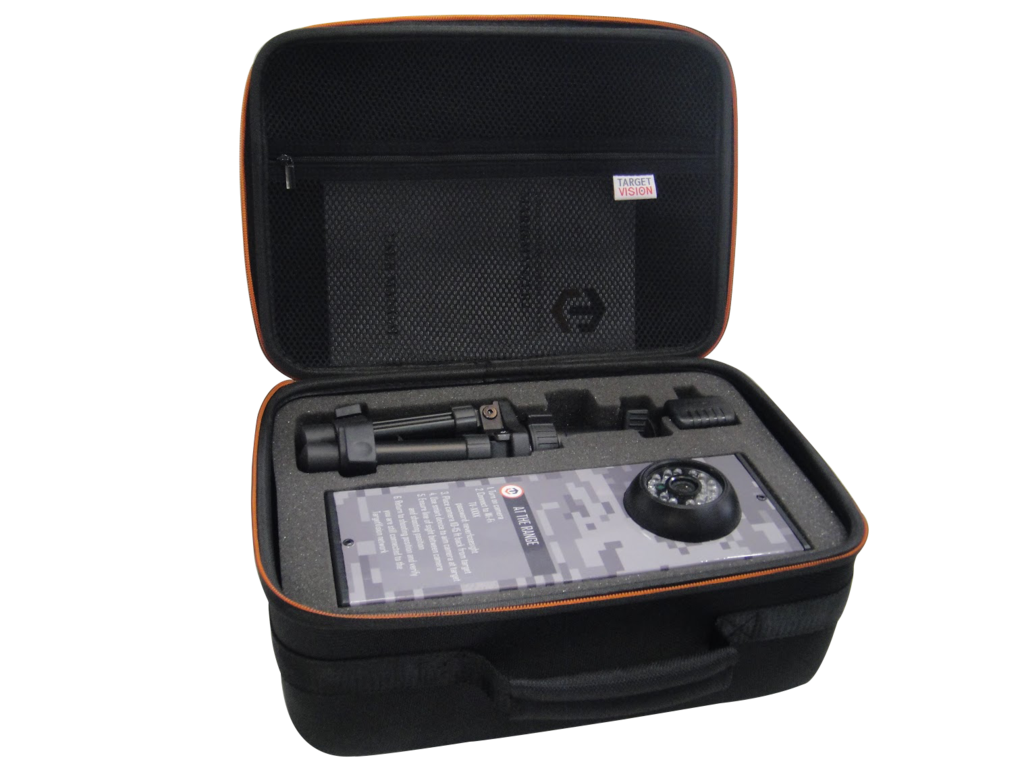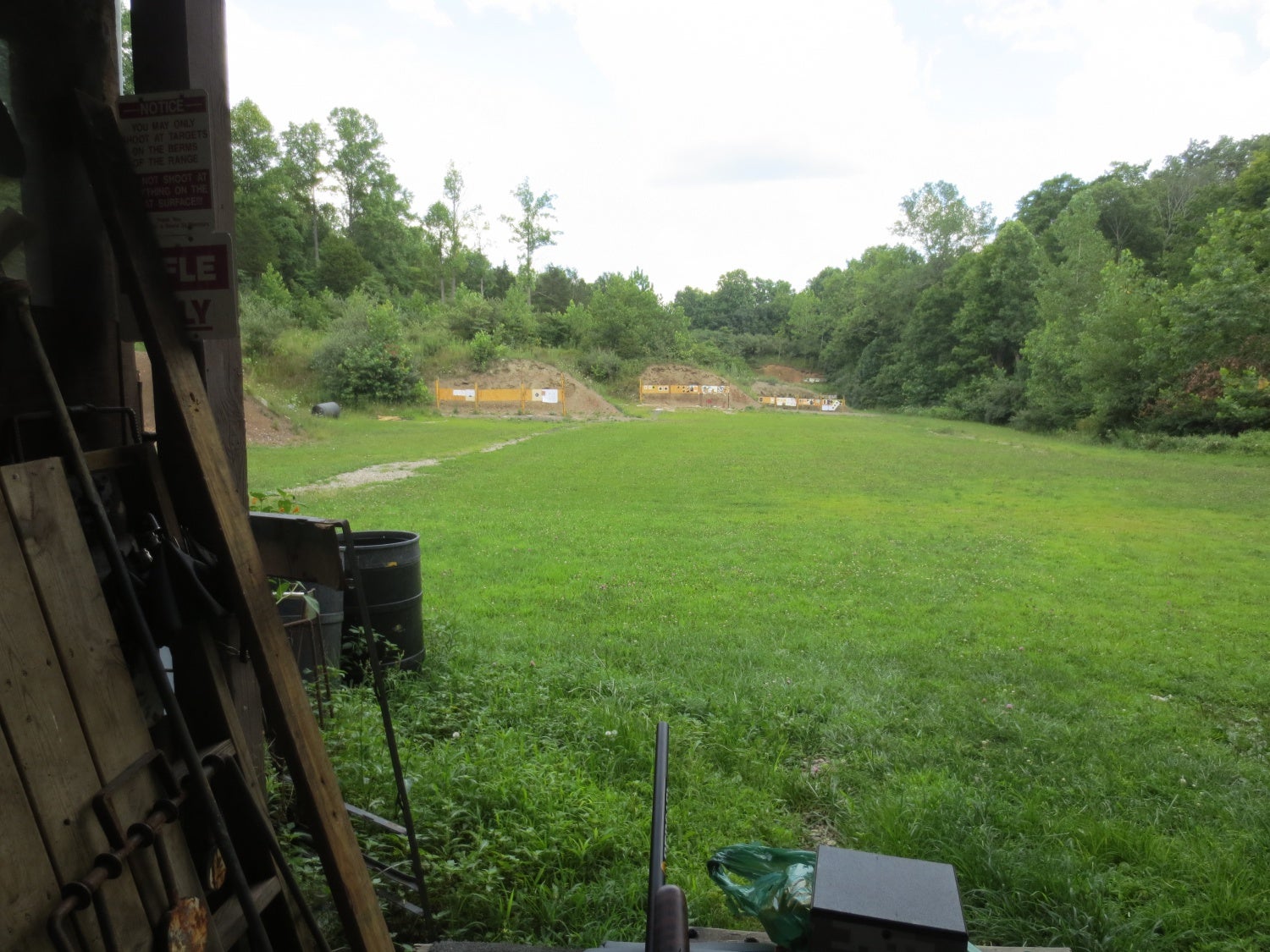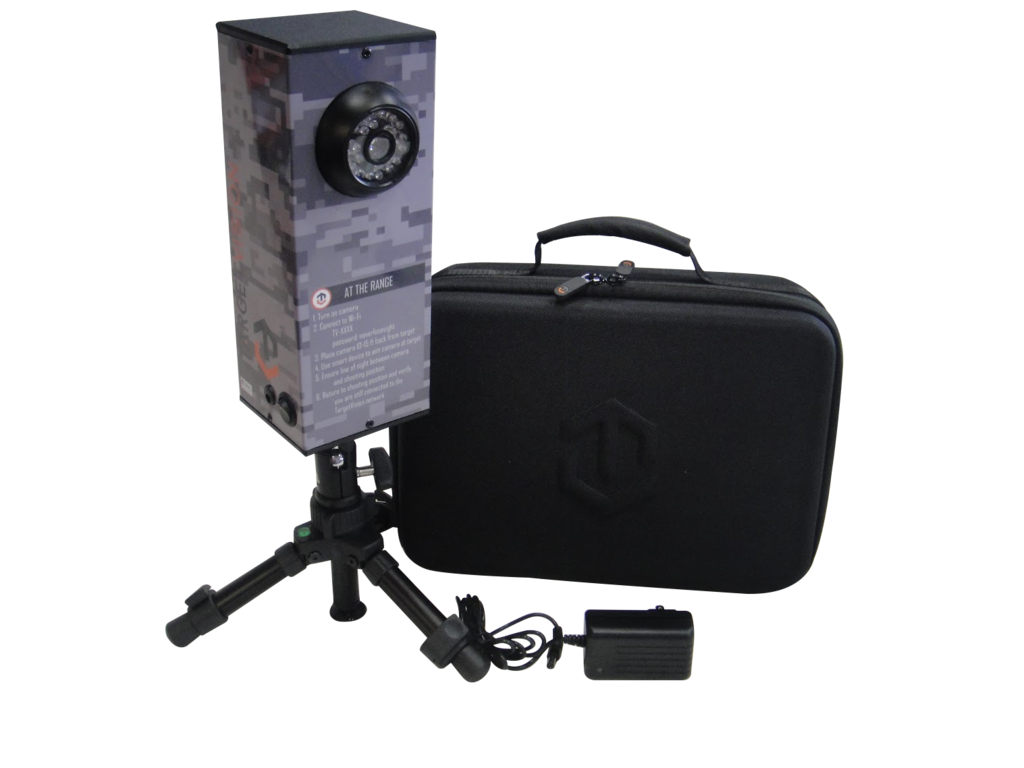There was a time not so long ago that long-range shooters had to have a second set of really expensive glass and typically a friend to call shots are long-range. It turned long-range shooting into a group activity, allowing friends to share experiences, and other sappy things. But, that often communal activity required said friend and in today’s fast-paced world getting schedules to line up is a problem.
As such, and combined with the proliferation of personal electronic devices, a company called TargetVision has stepped into the fore with their TargetVision system. Rather than have pre-linked transmission and base stations, the TargetVision system uses ones said personal electronic device (must be Android or iOS) to link the camera.
So, is this personal electronic target system a boon or a bane? Read on to find out.
What is the TargetVision


The TargetVision is a combined platform that combines a tripod, wireless camera, and common personal electronic device (tablet or phone) into a remote shot-spotting system. The two main items offered from TargetVision are the application and the camera, your PED is not included (but the app is free). When linked together, they provide robust capabilities that a common spotting scope would not be able to without pen, paper, and patience.
The TargetVision is offered in three models currently.
- “Hawk”
- A spotting scope adapting system that uses one’s existing scope, but adds in the electronic capabilities.
- $299 MSRP
- “Marksman”
- The version we are reviewing
- A single camera that offers at least 300 yards of capability. The offering includes tripod, camera, soft case, and charger.
- $349 MSRP
- “LR-2”
- A long-range camera system for shooting out to and past 1 mile. Uses a similar camera by adds in a wireless antennae receiver to amplify the distance signal. Package includes camera, added antannea, 2x tripods, hard case, and chargers.
- $649 MSRP
For all three series, there are the same general features and specifications:
Hardware Features:
- Live HD Video
- App-Based Software (iOS and Android compatible)
- Quick and easy set-up
- 12 + hour run time (The “Hawk is 7+ hours)
- Lightweight, Portable, Compact
- 2 year warranty
- Drop resistant
- Weather resistant
Specifications:
- Resolution: 1280 X 960
- Pivotable Camera
- Batteries: Rechargeable Lithium Ion
- Band: 2.4GHz
- Weight: 8 lbs.
The Application
The heart of the TargetVision’s capabilities is past the base hardware, which can be relatively easy to put together from a hardware store and with some solder (though not as nicely packaged!). Its the software that TargetVision uses to set itself apart from existing camera systems. The application takes full advantage of Android and iOS capabilities for photos, recording, and video, which can all be later shared.
- See your last shot blinking
- Pinch and zoom to see your shot
- Multiple viewers allowed
- Create shooting sessions
- Live camera view
- Shot numbering and grouping
- Colored shot marking for different loads or shooters
- Record your session
- Snapshot of each shot for later review
- Take notes
Rather than attempt to describe the various features, TargetVision has a nifty video showing most of them. It is almost as easy to use in person as the video shows, but I found the user interface for the iOS version to be a bit easier to use than the Android.
Shooting with the TargetVision
For testing, shooting was done at a 100 yard range (sorry, no 300+ yard ranges in easy travel distance). Shooting was done in bright sunlight, under nominal weather conditions. Little wind was present, but was a hot day at 84 degrees. An Andoid Nexus 7, iPad Mini, and Samsung S7 Edge were used for the interface.
Prior to usage, the user must complete a few tasks that may be difficult out at the range:
- Charge the TargetVision
- Download the Application
- Link the PED with the camera.
After setting the TargetVision out overnight to charge, I set up the system at the local range. Fortunately, my local range is not terribly busy (now just open and getting off the ground) so I was able to spend some time getting it set up, which was needed. I’d recommend making sure the pre-range tasks are completed, as I attempted to download the app and link the wifi near the targets – which takes a long time. Those at busy ranges may find fellow shooters bristling at the delay.

My local range.
At first, I set up the camera about 10 feet from the target, making sure the camera to see the entire target. Sadly, the rifle I was using was shooting off-paper and the TargetVision did not have a wide enough lens to see the shots and help guide me in. As such, I re-set the camera to about 17 feet (past the recommended distance) and found that perfect for a group of targets. Those shooting only one target can move the camera in closer.
The camera has a base resolution of 1280 x 960. Since we are not looking for high-def photos of groups, just results, the applications ability to zoom in was handy. However, if you are on paper, keeping the camera close to see the entire target is more than enough. I personally did not mind the slightly grainy zoomed image. I want to know where my bullets went, not how good they looked when they got there.

During shooting, I did notice a few quirks. The “capture” functions for both photo and video were extremely slow. Hitting the camera button typically took 5 seconds (even on a fast Samsung S7) and saving videos post recording can take minutes (which was annoying).
That said, the TargetVision did deliver on its promise. I could absolutely see my groups and watch them in real-time. The piece I found really enjoyable was the ability to track each shot and color-code groups. As such, I was able to stay on a single piece of paper shooting multiple loads through a rifle, no need to change targets. The app kept all the shots straight for me.

Full zoom screen shot from about 15 feet away.
Across repeated range sessions, the battery has lasted at least 4 hours. I’ve not had the opportunity to test in detail to the “maximum” time, but my phone or tablet will typically have died well before the TargetVision has.
The Good
- Easy to use app with powerful features. I especially like the blinking last-shot feature.
- Costs significantly less than a nice piece of spotting glass, especially for those shooting past 300 yards.
- Does have an adapter for current spotting-scope customers. Adds the features without having to go down-range.
- With the local camera, image is much crisper and with better “zoom” than a traditional spotting scope
The Bad
- I get the desire to camouflage one’s camera, but with it able to be shot by those not paying attention, I’d rather see it as orange or a bright fluorescent color.
- Internal rechargeable batteries are convenient at first, but with it being an outdoor device, battery swelling or long days at the range would be nice to have replaceable batteries (and better if they could be rechargeables too).
- Does require going down-range to set up. If at a busy range, can take time that may upset fellow shooters as you verify its targeting.
The Notable
- Does not have a lexan or similar ANSI approved splash-guard if shooting at steel. While in-theory not needed, one can easily rig something up.
- Once set down-range, cannot aim. A higher-end version with simple pan-tilit-zoom would be highly interesting to me for those shooting multiple targets, weapons, or trying to find errant shots not on paper.
Final Thoughts:
Does the camera system all-out replace the spotting scope? Nope, there still is very much a need for spotters, especially those shooting extreme long ranges. The camera system cannot see the vapor trail for bad calls or bad zeros (though the “Hawk” may be able to).
However, for those shooting anywhere from 100-500 yards, the TargetVision has more positive things going for it than detractions. Its relatively simple to use but can have quirks in its interface. Its nice to be able to see multiple targets in real time, but lacks the PTZ (which if they can be found on Amazon for $129, I know one can be integrated easily).
Considering that the TargetVision comes in at a cost near what most would spend on an entry to mid-level spotting scope, I find it worth the time and energy – so long as one knows the limitations.

 Your Privacy Choices
Your Privacy Choices
